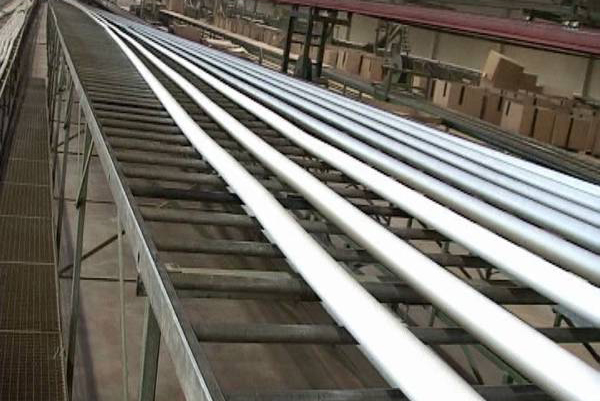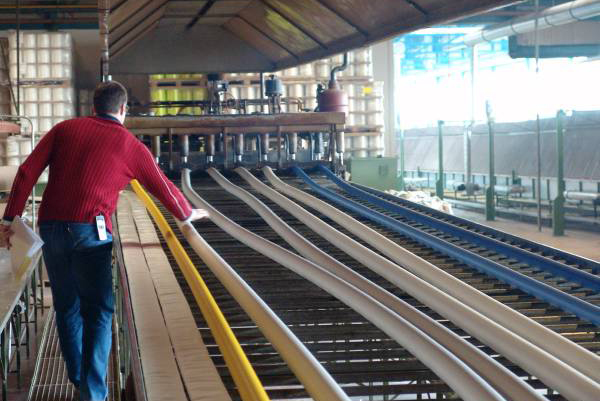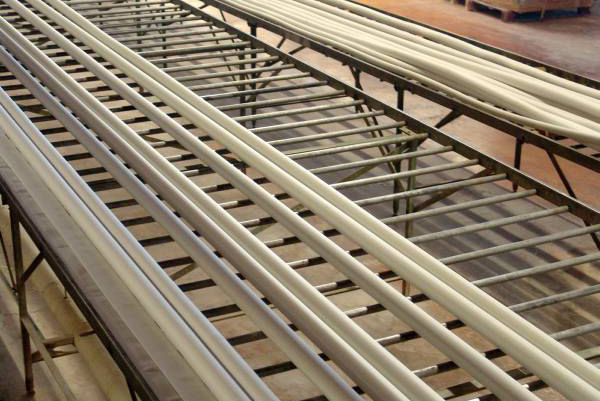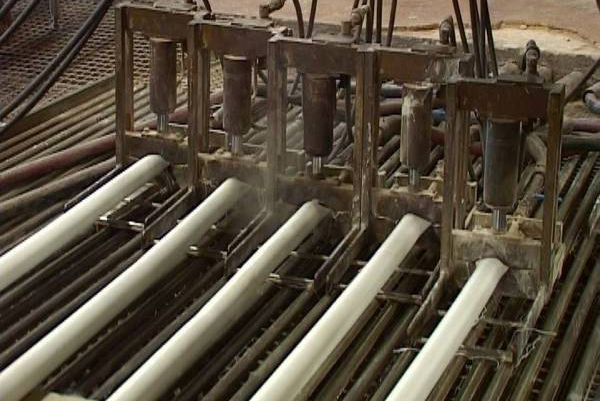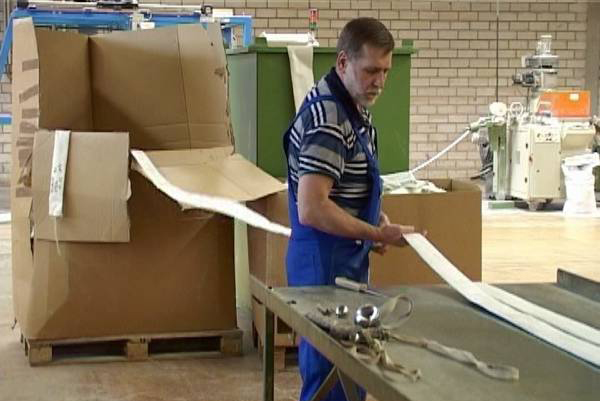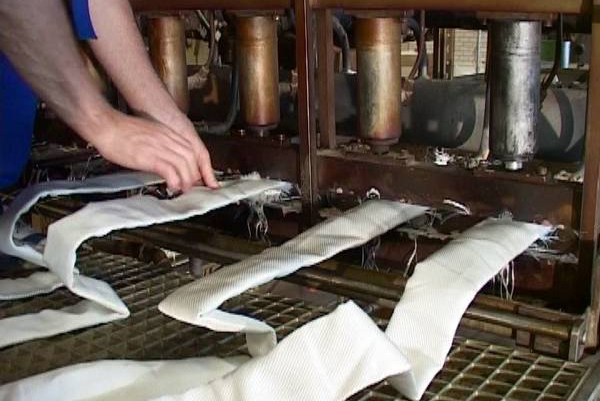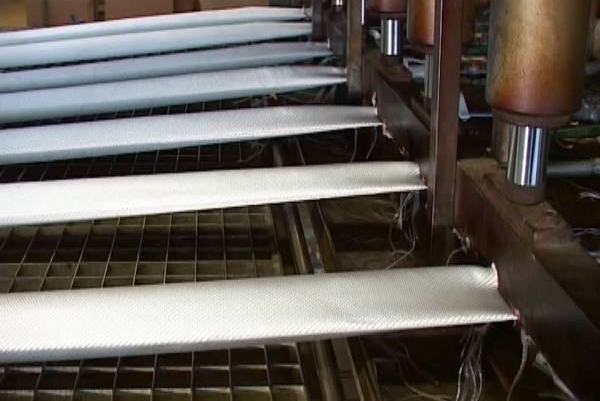Production of the fire hose with internal rubber lining
Processing on the heating tables fire hose with internal rubber lining
In 1839 Charles Goodyear developed vulcanized rubber. Under the influence of time, temperature and pressure natural rubber, or caoutchouc, can be turned into rubber. In the process, the molecules of natural rubber are divided and then crosslink with added Sulphur and other components. So, the rubber material gains its qualities: it gets pliable, permanently elastic, and resistant to aging, weather and chemicals.
Employees put the hose blanks on the cutting table and cut them to a working length of 60 meters. After that the hoses are put on the heating tables. Up to eight hoses can be processed next to each other at once. This manufacturing unit is able to accomplish more than 10 kilometers of fire hose per day. The heat activates the adhesive glue, so the manchon bonds with the surrounding textile jacket. For this purpose, an employee connects the hoses to both sides of the table. After the manchon is pressed against the jacket with air, the hoses are filled from one side with water steam at 160℃ [320℉] and a pressure of 6 bar [87psi]. It takes about 25 minutes until the vulcanization is over. On this 60 m long heating table the fire hoses can be cut to standardized German and European lengths of 15 or 20 meters without any wastages.
After the material has cooled off and condensed water ran off the heating table an employee puts the hoses on the adjacent wrapping table, where they are coiled with a roll up device and pulled off from the processing table. Shortly before the employee marks the length of the hoses with a stamp and a little cut. Only at the end of this table the hoses are cut to the ordered lengths and an employee prepares and bundles up the coiled units for the binding department.

